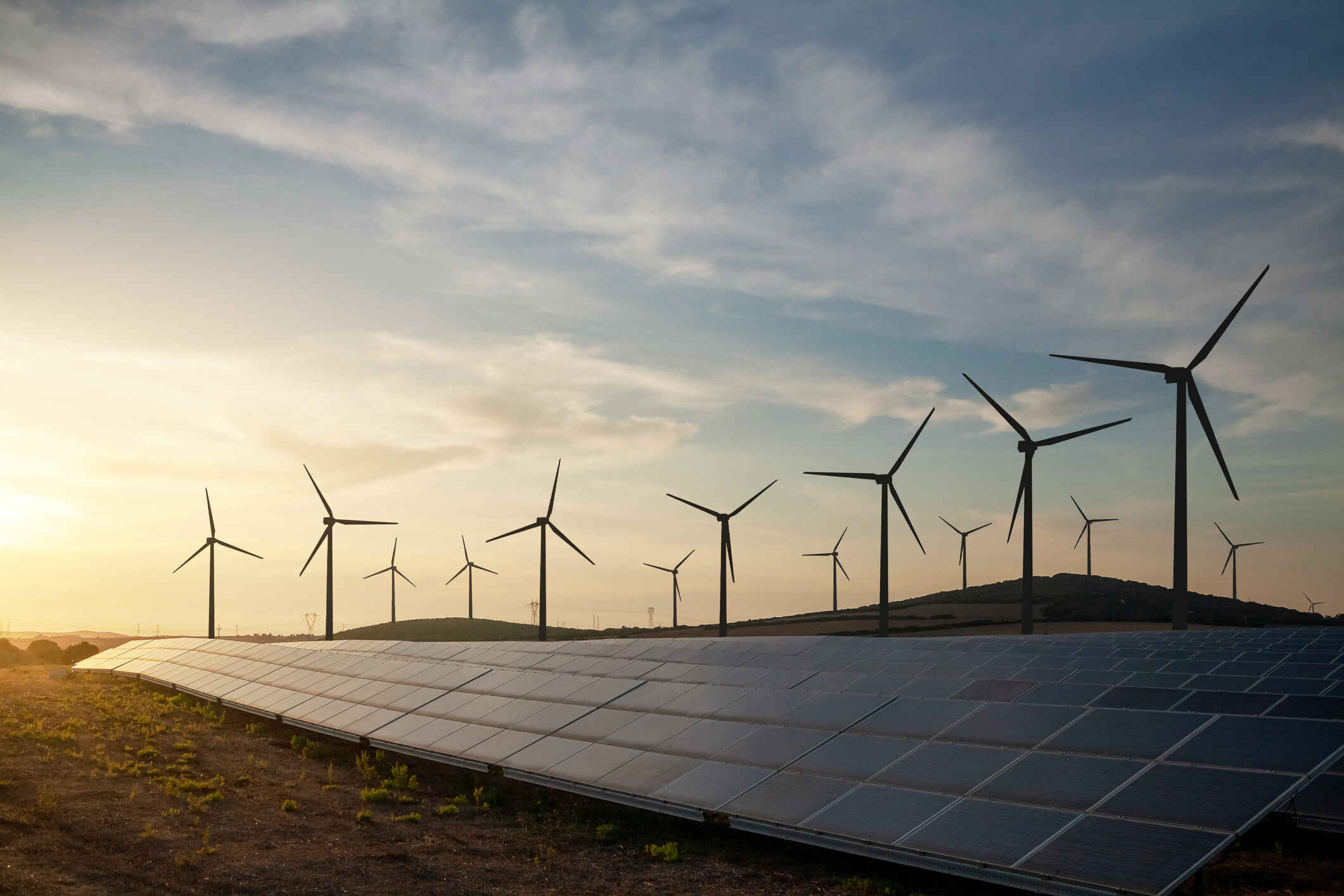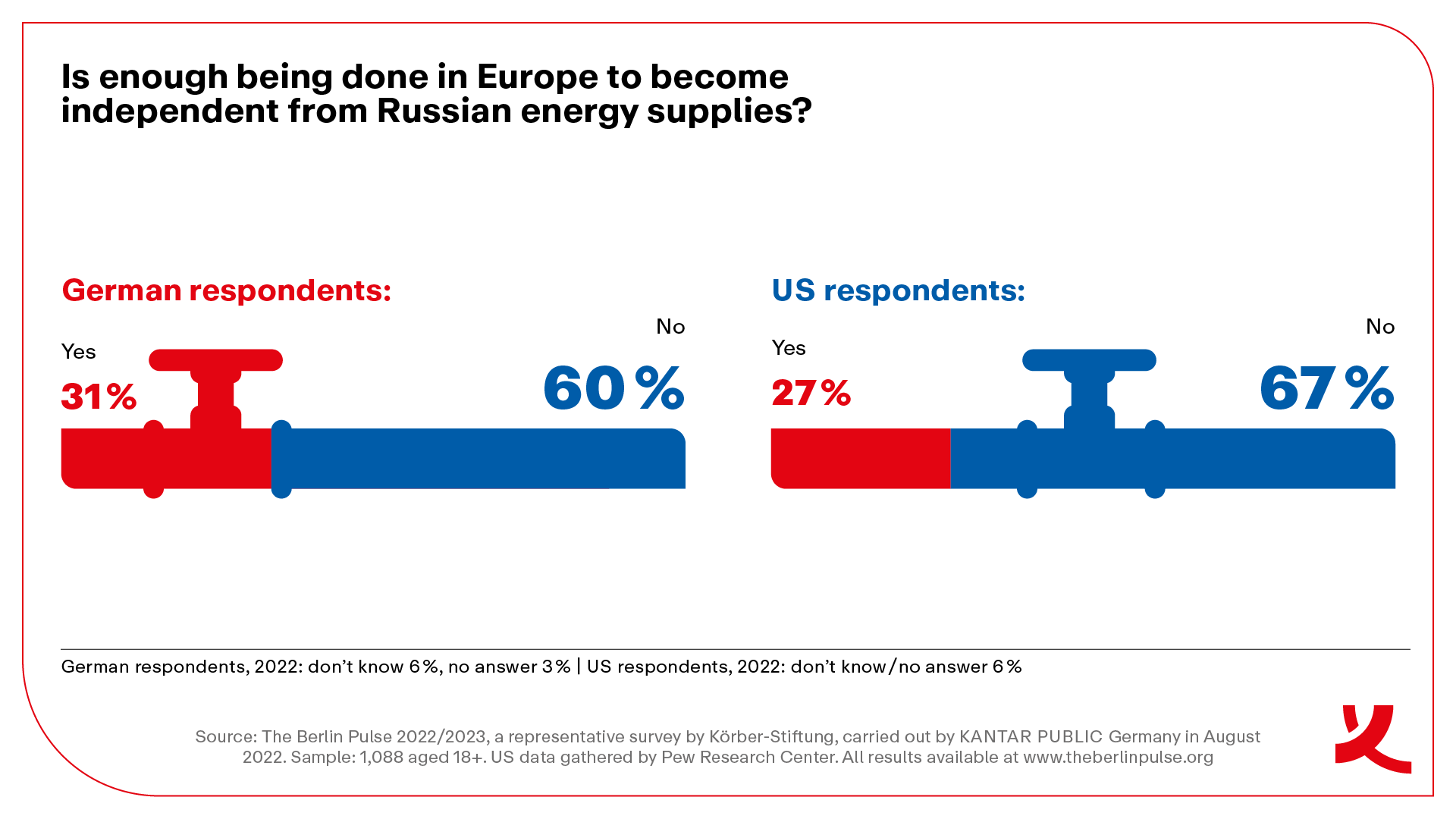
Foto: iStockfoto/24k-Production
Next Phase of the Anthropocene:
The geopolitics of a decarbonized future in 2040
By Sherri Goodman and Pauline Baudu
In 2040, full decarbonization has been achieved, leading to a new energy order and to reshaped geopolitics. How did we get there? The positive fallout of President Vladimir Putin’s war on Ukraine and weaponization of oil and gas against Europe has accelerated the green energy transition. Europe, the United States and their strategic allies received a wake-up call on the urgency not only to reduce carbon pollution and save the planet from devastating climate destruction but also to free themselves from the tether of fossil fuels in general, and Russian energy in particular. Global leadership has overcome technological and market constraints as well as the institutional and financial infrastructure that used to lock in a fossil-fuel-dependent system. Clean technologies have surged due to massive investments, no new oil and gas field or coal plant has been approved since 2022, strong policies have incentivized energy efficiency and demand reduction while carbon-offsetting systems compensate the negligible remaining amounts of natural-gas combustion.
In this future, renewables have reconfigured energy interconnections, which have shifted from global markets to more distributed regional grids. However, global reliance on rare earths and related materials critical to renewable energy generation, electrification and energy storage has increased, reshaping energy geopolitics. Producing countries such as Australia, Chile, China and Russia play a strategic role in securing supplies. New patterns of great-power geo-economic competition take shape to control supply chains, access intellectual property and maintain technological advantage. Yet, a single hegemon is unlikely to emerge and control trade routes due to the ubiquitous nature of renewable power sources.
China is in a leading position, being the largest producer of rare minerals and the main exporter of renewables’ technology and dominating supply chains and manufacturing. The United States, although exposed to stranded assets, is also well positioned due to its technological advantage, including in nuclear and biofuels. Both are major economic and military powers, with an uneasy relationship over their spheres of influence. Both control select supply chains, with the United States dominating in technology innovation, including for next-generation clean batteries, and China having greater strength in low-cost manufacturing at scale for various components of the clean energy supply chain. Both also face their own climate vulnerabilities, which is why their ambivalent relationship is a mix of climate cooperation and competition on green leadership through foreign mining investments and partnerships with developing nations. The European Union also benefits from decent reserves of mineral resources and accumulated mining know-how. In achieving their transition, EU countries have ended their dependency on Russia and secured greater energy and geopolitical resilience, while still needing to protect their green tech industry from Chinese anti-competitive behaviour. Germany, once the biggest EU importer of Russian oil, has led the way in deploying renewable energy through its domestic Energiewende. Berlin has reversed its opposition to carbon-free next-generation nuclear energy and is now adopting small modular reactors in select locations as part of its climate and clean-energy strategy. Transatlantic cooperation has also been pivotal as US-led investments have boosted technological innovation. Another major clean-energy powerhouse is India, which combines human talent at scale with innovation in the solar and renewables sector.

Conversely, the energy transition has been a challenge for fossil-fuel producers due to the decrease in the economic and geopolitical value of oil and gas. Major Gulf states exporters took advantage of the shift by offsetting their losses and diversifying their economies, with Qatar and the United Arab Emirates leading in renewables. However, the Gulf states have lost geopolitical influence as oil prices are no longer a source of foreign policy leverage. Less resilient countries such as Algeria, Iran and Russia were somehow able to manage the transition, although loss of revenues strongly weakened their domestic social cohesion and led to unrest. Other fragile states like Angola, Libya, Nigeria and Timor-Leste lacked the financial and institutional resources to diversify their economies and have been suffering a greater impact due to poor governance practices and increased exposure to conflict. These countries might see a stabilizing effect from the transition in the long run through less corruption, more equitable wealth distribution and reduced foreign interference. However, their fragilities and complex conflict patterns, previously aggravated by oil considerations, continue to intersect with other mutually reinforcing factors such as ethnic tensions, weak state capacity and domestic climate impacts.
Strengthened global governance institutions and leading economies have stepped in to manage economic and security risks from the transition. They provide incentives to build the infrastructure for the energy transition, regulate minerals trade and allow G20 nations to partner with poorer countries through technology transfer and financial compensation for foregone fossil rents. In addition, a revitalized NATO has emerged as a green standard-setter, leading by example by reducing the carbon footprint of its forces, adapting military operations to the unavoidable impacts of climate change and acting as a platform for the exchange and amplification of good practices.
Alliances in which fossil fuel played a key role, such as the US-Saudi Arabia or the Russia-China ones, have weakened. Comparative advantages have led to new partnerships, of which the Israel-Jordan-United Arab Emirates cooperation deal on solar energy and water desalination is a vivid example. New forms of diplomacy have emerged, such as solar diplomacy led by India through the International Solar Alliance. At the national level, although government intervention played a key role during the green transition in incentivizing the private sector and mitigating risks, the shift to renewable energy has led to increased decentralization of energy systems with the emergence of new subnational actors such as the Pacific Northwest Clean Energy Alliance, which includes U.S. states such as California, Oregon and Washington and Canadian provinces such as British Columbia, and gives a more central role to cities.
In the energy transformation phase, governments designated certain types of oil and gas installations as “transition assets” and took an active role in helping private companies build pipelines and terminals equipped with carbon-capture technology or for low-carbon fuels like hydrogen and ammonia. Incentives have been implemented to foster public-private partnerships and reverse the balance of risks of the private sector, which maintains a crucial role in climate finance, adaptation investments and technology innovation.

Finally, the transition has reshaped the global security landscape, particularly as hydrocarbon leverage has almost disappeared, leading to a less conflictual mode of international politics.
However, new tensions and vulnerabilities have emerged. While the incidence of conflicts over contested hydrocarbon reserves has decreased, those intersecting with bad-governance factors and social fragilities have been difficult to settle. Conflicts over key minerals, as in the Democratic Republic of Congo, emphasize the need for good governance, environmental regulation and respect of land-tenure rights. Russia’s loss of influence due to its failure to diversify its economy from oil and gas and to manage its many climate vulnerabilities, including permafrost collapse and wildfires, have made it an even more disruptive nation. Digitalization and the greater reliance on interconnected electricity grids have increased the risks of cyberattacks, highlighting the need for global cybersecurity norms and rules.
The green energy transformation has reshaped global geopolitics and offers the promise of not only an environmentally safer future but also fewer conflicts over energy resources. Successfully addressing those that remain from maldistribution of resources will require governance practices focused on equity and inclusivity in decision-making processes. Ultimately, factoring environmental considerations in the mitigation equation will also be critical. Decarbonization alone will not suffice to address the climate emergency – tackling the biodiversity and environmental crisis is also necessary.
Sherri Goodman is secretary general of the International Military Council on Climate & Security and senior fellow at the Wilson Center’s Polar Institute and Environmental Change & Security Program. From 1993 to 2001 she served as the first U.S. deputy undersecretary of defense on environmental security.
Pauline Baudu is research assistant at the Wilson Center’s Polar Institute and Environmental Change & Security Program and at The Center for Climate and Security in Washington DC.

